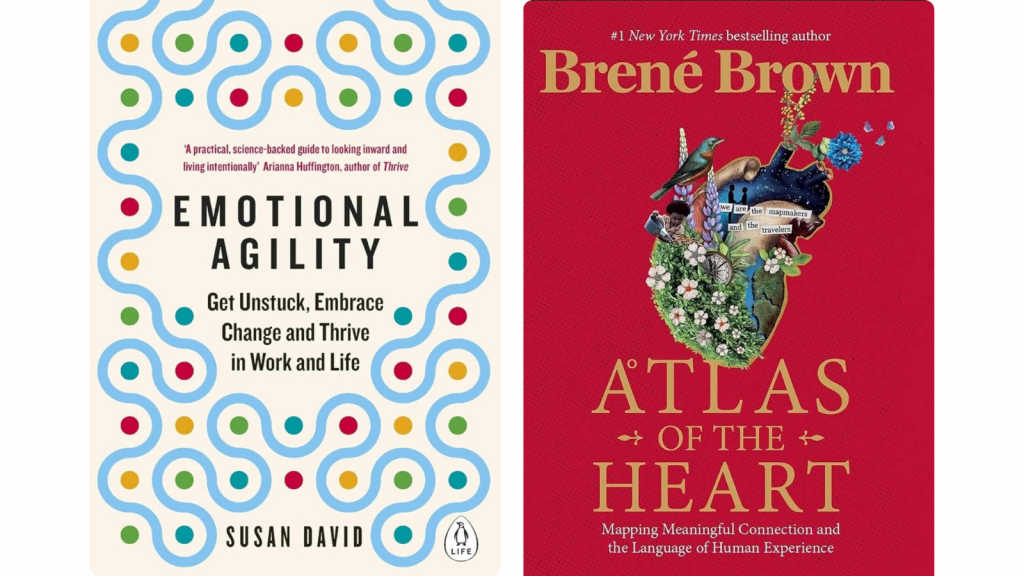Hello Friends!
There is a fascinating occurrence that I have noticed in my coaching practice, and that is that people seem to be curious about the same topic at the same time. It’s like there is something in the water. For example, there was a period when almost all my clients were after clarity. Then there was a season of finding out about personal and professional strengths.
The most recent theme of interest is around emotions: what they are, how to identify them, what understanding emotions can actually do for us.
It’s an intriguing topic! And one that I think is incredibly relevant for our world today. In so many ways, getting comfortable with having emotions and being able to accurately label them is a real skill. Not to mention one of the key skills that differentiates not only great leaders from good, but also humans from AI!
As the emotions guru Susan David says, “When people are allowed to feel their emotional truth, engagement, creativity, and innovation flourish in the organization.”
If that isn’t a good reason to get comfy with emotions, what is?! 😉

EMOTIONAL GRANULARITY….
Did you know that there are 7 basic human emotions? Apparently, the majority of people can only name 3! Happy, sad, and angry. (Or as I like to call them, the “Glad, Sad, Mad” trio.)
There are actually 7 basic human emotions however:
- Joy
- Surprise
- Anger
- Sadness
- Contempt
- Disgust
What is fascinating when you look a little more closely at those seven, is that there is really only one of that group that we would think of as “positive”. Surprise can go either way; but the remaining 5 are perceived as “negative”.
Which begs the question: why did we evolve to have so many negative emotions, and so few positive ones?! The answer is: emotions aren’t inherently negative or positive. They are all information. Data. And as such, useful for determining a course of action, a response, a thought process.
As Cory Allen so eloquently puts it, your emotions are trying to help you:

And there aren’t just 7 emotions – there are anywhere from between 80 to 120 emotions, depending on how they are defined.

I often use this Feelings Wheel [below] with my coaching clients, to demonstrate how many different emotions and feelings there are. “Emotional granularity is an individual’s ability to differentiate between the specificity of their emotions.” The ability to precisely determine what you are feeling is key to emotional awareness and intelligence.

Both Susan David’s book Emotional Agility, and Brené Brown’s book Atlas of the Heart are fantastic resources for emotional granularity, if you are looking to skill up on this!

HOW TO HANDLE EMOTIONS AT WORK…
I am such a visual learner. So I am obsessed with Liz Fosslien’s incredible visualizations of everyday work-related themes. I’ve shared many of them in this newsletter!

So you can imagine how thrilled I was to hear her interviewed on the Ten Percent Happier podcast with Dan Brown. She had some great ideas about how to deal with emotions at work: one of my favourites being the idea of a Dread Zoom! Collectively get together on Zoom with some of your teammates/friends/colleagues and do that thing that you’ve been dreading and putting off! Like an accountability group but better.
One fact she mentioned in the podcast kind of blew my mind:
“Everyone has cried about work.
Don’t make assumptions about why someone is crying. Women often cry because they are angry or frustrated, but most men assume women cry because they are sad. And even withhold feedback because they don’t want to make their female employees sad.
Women have been socialized where it is not appropriate to show anger by yelling and so anger comes out through tears. It is a biological reaction. Also, women have biologically shallower tear ducts than men and so a man and a woman can have the same level of emotion and a woman will cry sooner than a man.”
This is some seriously powerful information about emotions, how people communicate, and assumptions we may all be making! So much to think about in that!!
We talk a fair bit about emotional intelligence, but rather inexplicably, we almost never talk about emotions and how to better recognize them either in ourselves or in others. I’m curious: is that your experience at work too?
WHAT I’M READING…
I am so on theme with what I am reading too! 😉 A dear friend of mine gave me a book for my birthday entitled “In a Thousand Different Ways”. In it, the main character, Alice, has synesthesia: she sees people’s emotions as colour around them. For her, it feels like a curse as she is overwhelmed by the sensory overload. But she learns to accept it as a gift – understanding people and their true emotional motivations through seeing their emotional auras.
I found it a fascinating read! Such an intriguing concept – and apparently a perceptual phenomenon that does actually exist! It really made me think about emotions differently, and was a unique perspective on senses. As someone who is quite in tune with my senses (smell in particular), I was mesmerized by this book.

I’d love to know if emotions and emotional granularity are topics that interest you? I find them infinitely fascinating!!
I headed to the Alps last weekend for some skiing – some soul-nourishing time to replenish many of those positive emotions, and to also fill up on sensory bliss in the snowy mountains!
It feels especially adequate given this week’s theme to sign off with:
Be emotional. Stay healthy.
Hugs,



